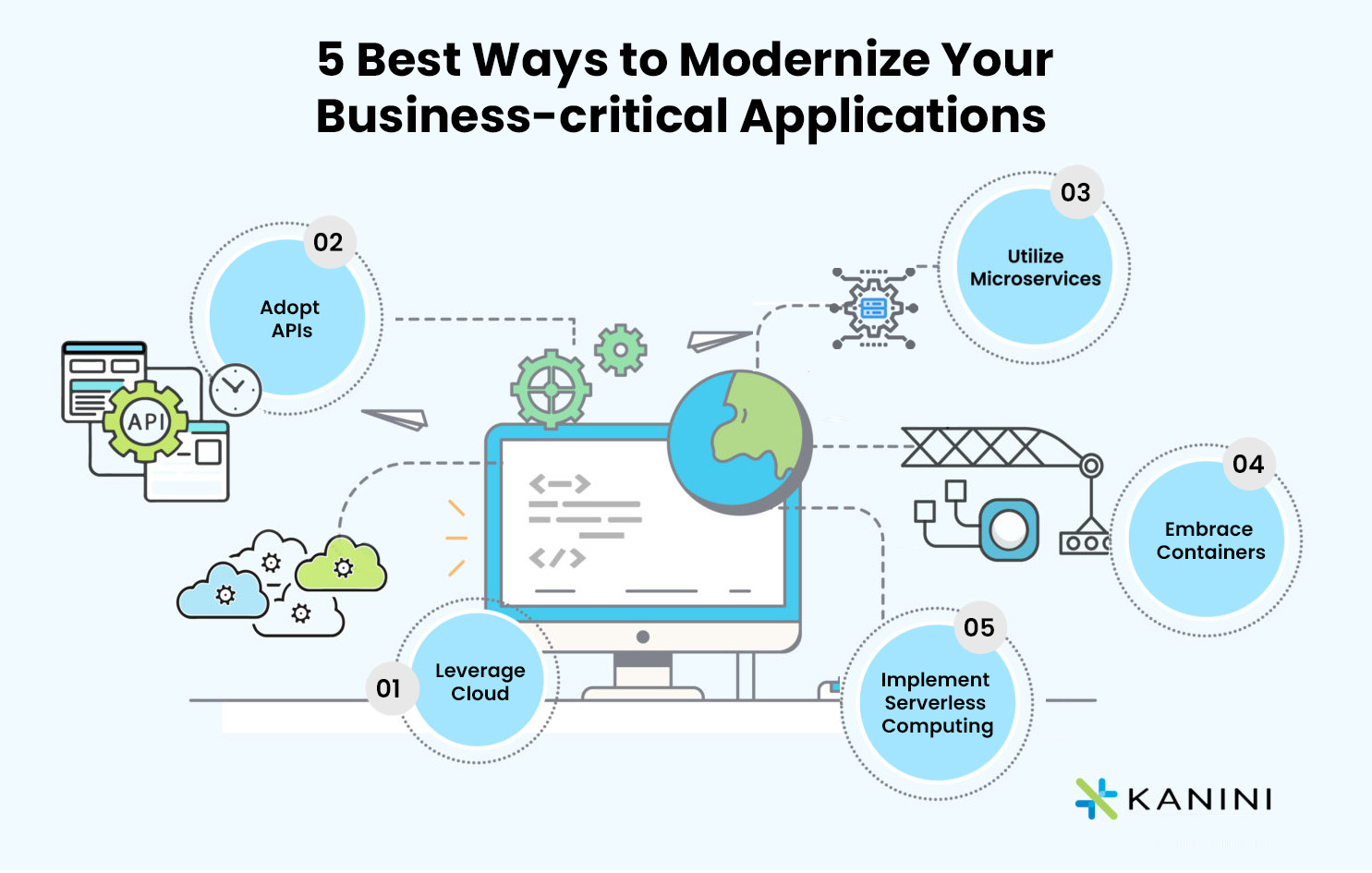Why Application Modernization?
- Enhancing Legacy Applications and Achieving Efficiency
The urgency to modernize business-critical applications is growing. A 2023 survey by Wakefield Research revealed that a staggering 92% of enterprises are actively working on at least one application modernization project. This push for modernization highlights the limitations of legacy systems in today’s digital landscape. These legacy applications hold business-critical data, like customer records or order history repositories that help perform critical functions such as determining mortgage eligibility or reminding of a critical healthcare service.
These business-critical applications are usually run on systems that are not scalable in line with the increased number of calls that come from the newer mobile applications, SaaS apps, IoT applications, and other systems. The reason is that the legacy systems do not support seamless data flow among different applications due to a lack of integration. Therefore, they are not well-suited to facilitating the implementation and adoption of modern technologies and hence need to be modernized.
Such legacy apps can be modernized by migrating them to a new and advanced cloud platform, upgrading their technology stack, improving application architecture, or just adding innovative features with cutting-edge technologies.
- Preparing and Adapting to the Changing Business Needs
Contrary to legacy application modernization, newly built applications can also be considered modernization efforts, by visualizing the process through a more futuristic lens. As many organizations are taking the route to digital transformation, evolving their applications into next-gen and enhancing them to be customer-centric/business-centric has become inevitable.
That said, ensuring business continuity by modernizing business-critical applications (either legacy or newly built) should now be a more obvious focus than ever for enterprises across the globe to prepare and adapt to the changing times, given the rapid pace at which technology is growing. The advent of concepts like generative AI, edge computing, etc. presents a huge potential to transform business applications in unbelievable ways.
5 Best Ways to Modernize Your Applications
- Rehosting: In the case of a simple rehosting where no specific change is required and no new functionality is added, moving to the cloud is just a “lift and shift” process – yet offering the benefits of cloud computing.
- Replatforming: Many organizations proceed to application re-platforming – they make their applications more robust and dynamic in the modern digital environment. In this case, applications are not only moved to the cloud but a few changes are also made to the application to add new cloud functionalities.
- Refactoring: The next approach is refactoring. In this case, organizations onboard a team of application modernization service providers with a team of developers to modify their existing applications to make them better suitable for the cloud environment.
- Rearchitecting: When none of the above approaches seem efficient, the rearchitecting approach is used. Rearchitecting involves redesigning applications to fully leverage cloud-native infrastructure, such as microservices architecture or serverless computing. This approach optimizes performance, scalability, and cost-efficiency.
- Rebuilding: In more complex cases, apps are rebuilt. Rebuilding entails rewriting applications to maximize cloud capabilities and address legacy architecture limitations. It eliminates technical debt, embraces modern development practices, and optimizes resource utilization for enhanced performance and scalability.
- Replacing: When legacy applications no longer suffice, replacing them with cloud-native solutions or SaaS is also an option. While requiring initial investment, this approach enhances operational efficiency, mitigates security risks, and fosters innovation through cutting-edge cloud technologies.

Challenges of Modernizing Business-critical Applications
The modernization process can prove challenging for many reasons—employees may resist the change to their activities, and leadership may have questions regarding the costs accompanied by modernization. Some more such challenges include:
- Knowledge and expertise deficiency: There is still a skill gap that organizations deal with while leveraging cloud platforms and cloud-native application development efficiently for modernizing business-critical applications.
- Dismantling a monolith is not easy: It can be quite daunting to take stock of all the existing data. It requires determining which application to choose first by assessing various factors such as its data and business process dependencies, technology, business value, compatibility with the modernization approaches, etc.
- Lack of a unified management approach: Continuously managing without an integrated, holistic approach that can intelligently map workloads, especially in hybrid IT environments is another common hurdle for application modernization. Some necessary activities you need to take up for efficiently managing modernization include – orchestrating processes, improving performance, and enabling automation to accelerate.
- Cultural gap: Cloud-native thinking requires a new approach to application development and operations. A lot of organizations, especially SMBs, often find a huge gap between traditional work processes and agile IT processes, and that journey can see a lot of turbulence.
The Way Forward
Organizations are increasingly embracing modernization approaches to keep their offerings or services critical and relevant to their customers. But how can tech leaders overcome the common challenges of modernizing their organizations’ business-critical applications?
It doesn’t really matter if your organization is a large-scale or an SMB, and which industry it belongs to. Any organization must quickly adopt modern technologies to improve its application stack, thereby preparing and adapting for new challenges – or be ready to lose out to the competition. However, it’s exceedingly important to have a clear plan of action and a supportive infrastructure to ensure your business-critical applications are proactively monitored, improved, and maintained.
If you are ready to embark on your app modernization initiative or in the middle of it, KANINI can help you overcome the hurdles on your path and drive your journey to success. With a successful track record and deep industry expertise, we craft tailored solutions to make sure you get the best out of your modernization initiative. To know more about how we can help you, reach out to us today!
Author









